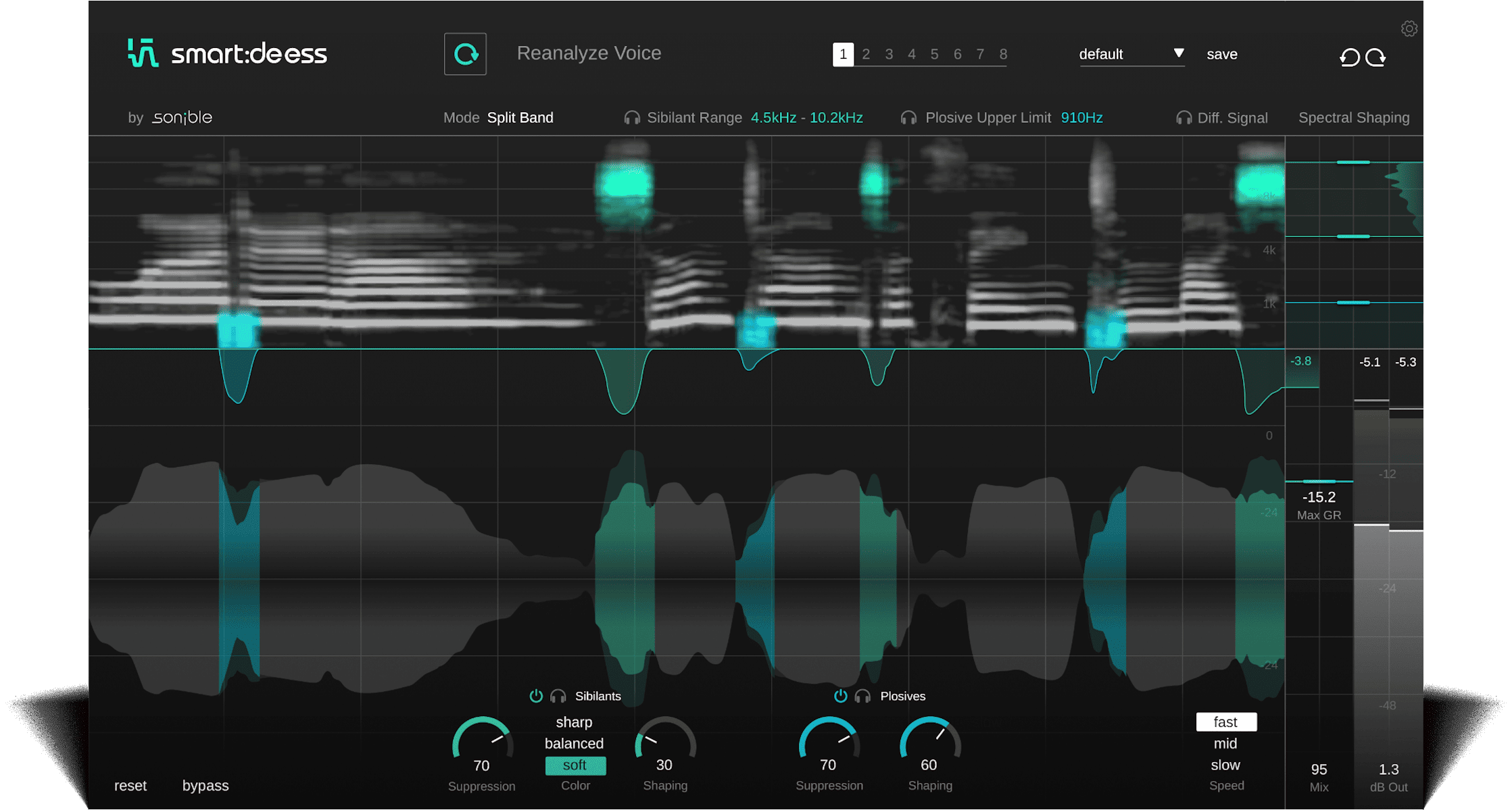Learn all about smart:deess, the world’s first AI powered de-esser with industry leading spectral de-essing, plosive removal, and “re-essing”
We’ve just announced the latest addition to our roster of industry-leading, AI-integrated plugins.
smart:deess is the next step in de-essing technology, totally reimagining how a de-esser detects and cracks down on unwanted vocal elements such as sibilance and plosives.

Going beyond traditional de-essers in terms of both results and capability, smart:deess is one of the most powerful de-essers on the market right now, and the first de-esser to use AI to detect sibilance.
In this article you’ll find out more about smart:deess, how it works, and what it can bring to your workflow to elevate your vocal recordings to new heights.
smart:deess is available now. Alternatively, you can take it for a sssspin with a 30-day free trial.
The de-esser is a staple of the music production workflow, and it has been for decades. De-essers reduce the level of sibilance in vocal recordings.
Sibilance occurs when a microphone picks up an ess, ch, th, or similar sound. These sounds are the harsh ‘hisses’ that occur in the upper mid frequency range, typically between 4-10 kHz. In this frequency range, problematic sibilants have higher energy and thus jump out of vocal recordings, appearing much louder than other syllables.
A traditional de-esser detects sibilance by setting a threshold – similar to a compressor – that is only triggered within the frequency range that sibilance occurs in. When the threshold is crossed, the entire frequency range (or the whole signal) is compressed. Traditional de-essers are very similar to compressors, the key difference being the frequency range within which the threshold can be triggered.
There are several limitations of this method of de-essing, including not catching the full length of the sibilance, reducing the level of the entire track, and more.
smart:deess solves these problems by approaching de-essing in a new way.
Using sonible’s industry leading artificial intelligence algorithms, smart:deess is able to actually detect the presence of sibilance – and other unwanted phonemes – in an audio recording rather than simply responding to a volume threshold being crossed. This makes it much more accurate when detecting sibilance.
Once sibilance is detected in a recording, smart:deess then uses sonible’s spectral processing technology to reduce the volume of just the problematic parts of a phoneme, rather than blanket ducking the entire frequency spectrum (or a certain frequency range), as other de-essers do.
So, smart:deess has the ability to shape the sound of a sibilant, removing just the unwanted, high energy and unpleasant elements. In addition, beyond simply reducing the volume of sibilance, smart:deess can shape the character of sibilant frequencies.
Just because sibilant frequencies can be unpleasant, it doesn’t mean they are totally unwanted, in fact by over de-essing it can sound as if your vocalist has a lisp. Use the Color controls to tune the sibilant character (soft, neutral or sharp), allowing the articulation of sibilants to be retained without being dominant or unpleasant.
As a result of the integration of these new technologies into a de-esser, smart:deess is able to achieve functionality beyond that of what would be considered normal for a de-esser.
At its core, smart:deess is designed to remove sibilance, and it does this better than conventional de-essers, but it also has a few extra tricks up its sleeve. One such unique ability of smart:deess is plosive removal. Because smart:deess detects different phonemes in real-time, it can also detect other phonemes like plosives.
One such unique ability of smart:deess is plosive removal. Because smart:deess detects different phonemes in real-time, it can also detect other phonemes like plosives.
Plosives see most of their energy occurring in the bass frequencies. They occur when a burst of air – normally resulting from the pronunciation of a puh, or buh sound – hits the diaphragm of the microphone. This air wave physically moves the diaphragm of the microphone as appears as bass frequencies in audio recordings. smart:deess can detect these plosives, and just as with sibilance, employ spectral processing to remove them! That way, not only problematic low frequency components of plosives are removed, but also harsh components of plosives like t or k are tamed in a natural sounding way.
smart:deess can detect these plosives, and just as with sibilance, employ spectral processing to remove them! That way, not only problematic low frequency components of plosives are removed, but also harsh components of plosives like t or k are tamed in a natural sounding way.
Last but not least, another unique ability of smart:deess is “re-essing”: smart:deess can detect and fix dull or lisping phonemes, injecting energy into voice recordings.
As with all of our plugins, smart:deess is available for you to try for free for 30 days. If you would like to download smart:deess and try it for yourself then please head to the smart:deess product page.